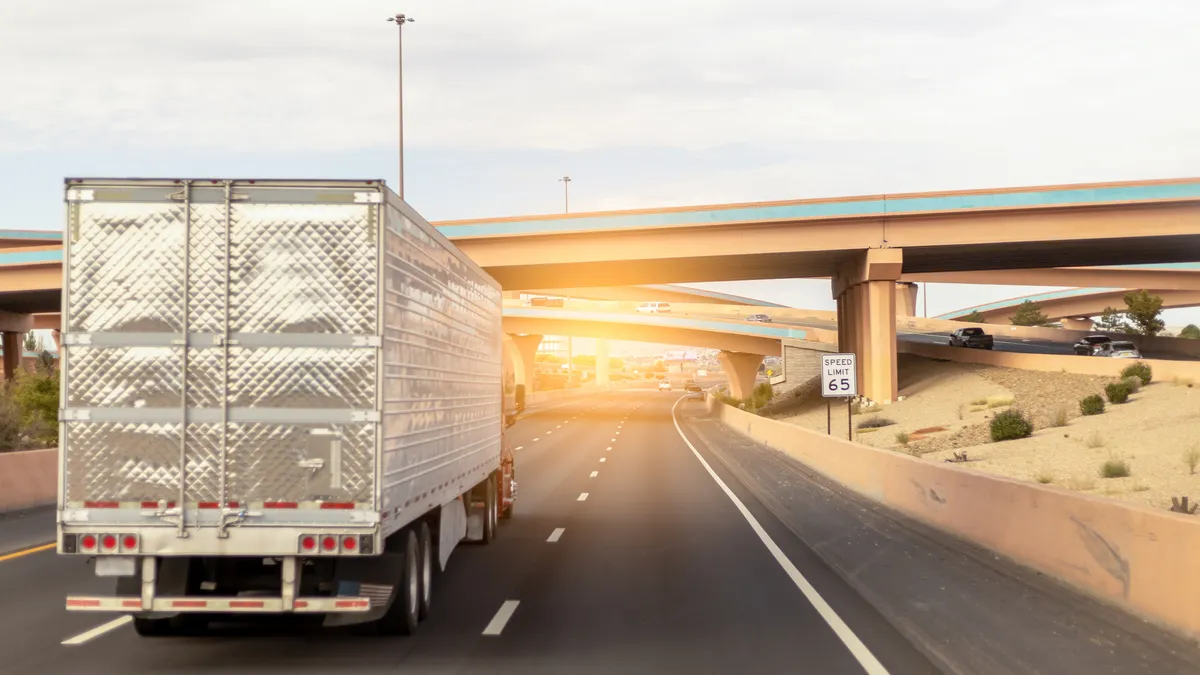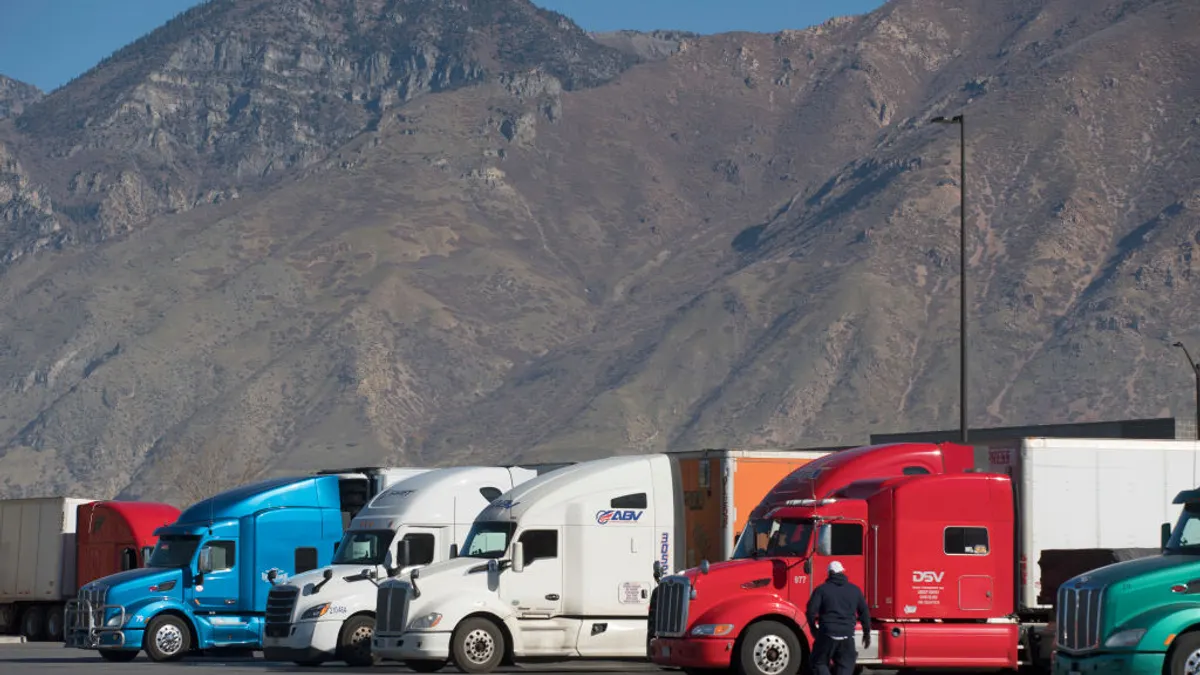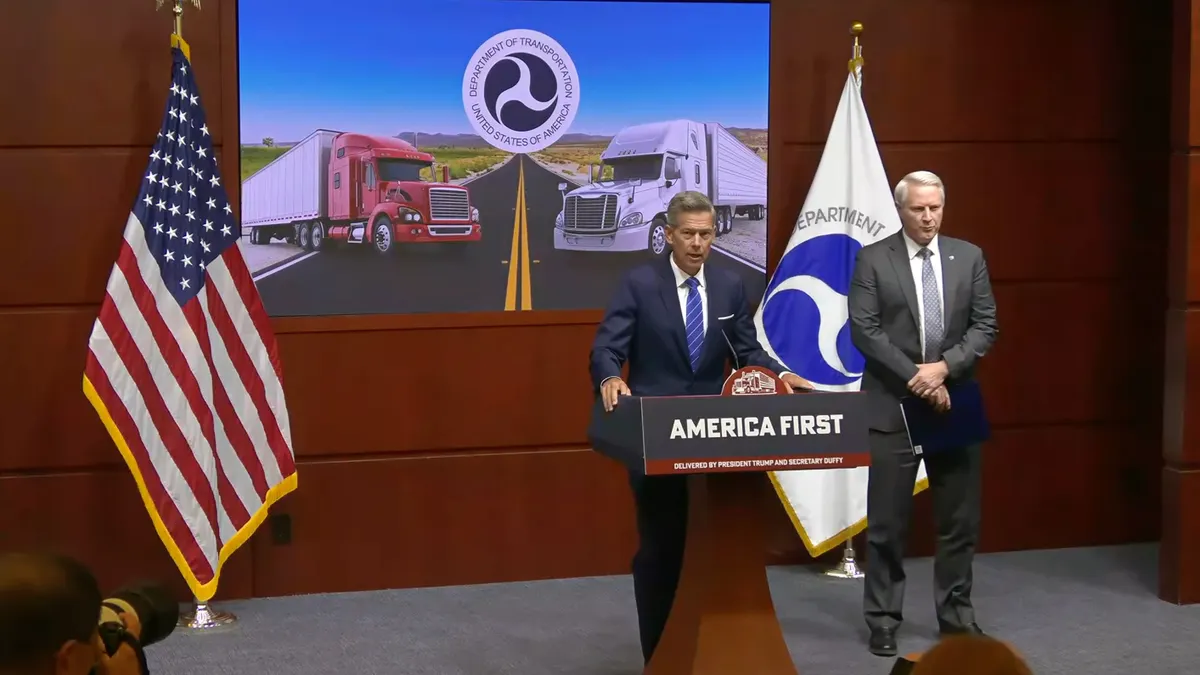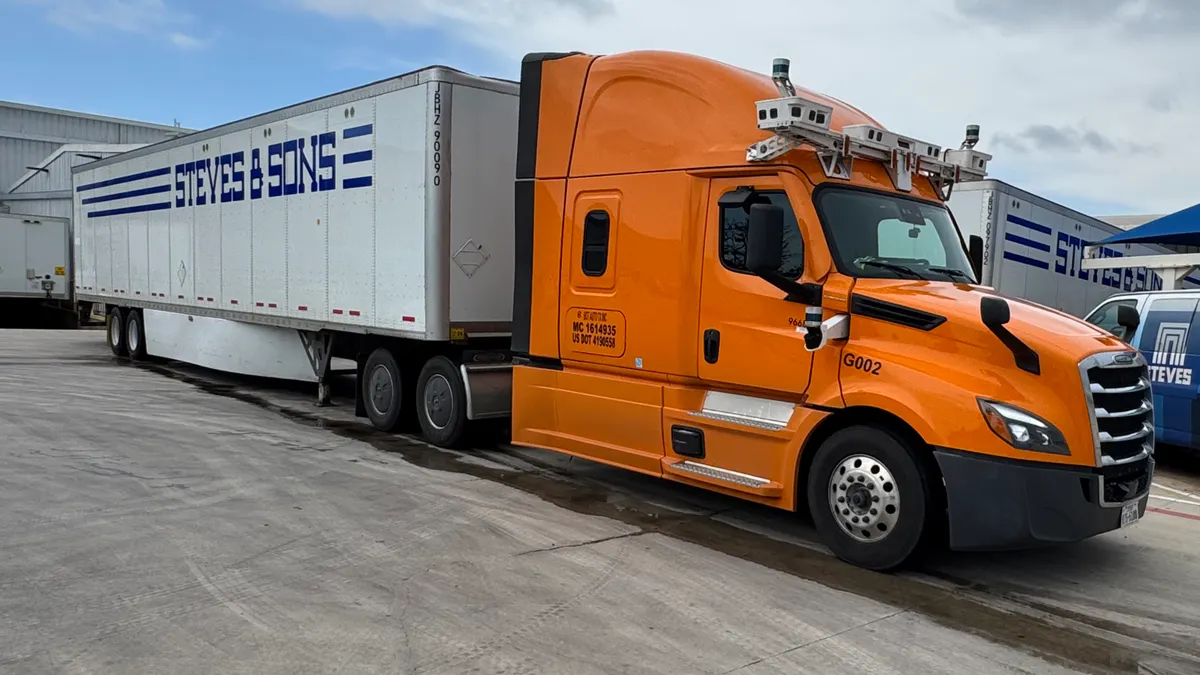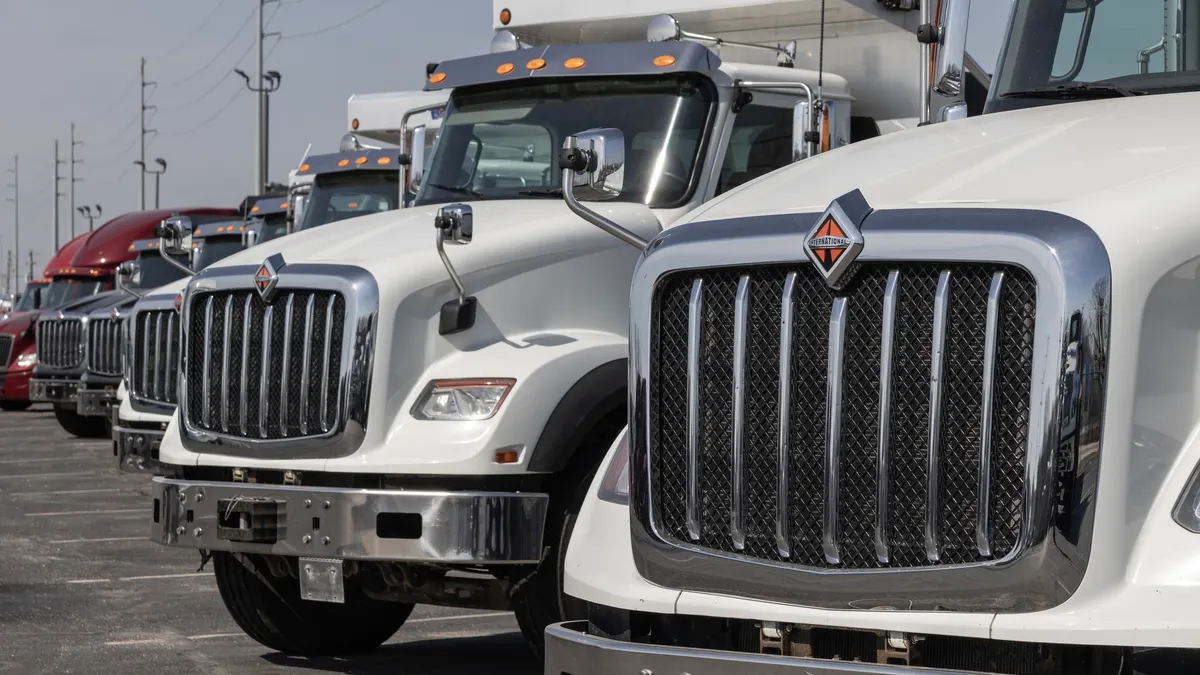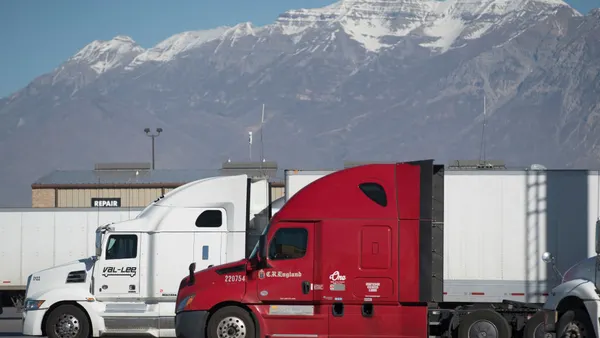Some major regulations on trucking equipment could develop this year — from further emissions reductions to automatic emergency braking systems.
Industry representatives voiced their support and concerns about some of the most-anticipated equipment regulations in interviews with Trucking Dive.
The conversations provided a glimpse of the new realities carriers and OEMs could soon face.
Speed limiters
The Federal Motor Carrier Safety Administration’s potential rule to limit top truck speeds is among the most divisive topics in the industry. The agency missed its own December deadline for unveiling a notice of proposed rulemaking after briefly releasing, then rescinding, a 68 mph proposal in September.
While the American Trucking Associations and Truckload Carriers Association favor speed limiters, citing safety and fuel benefits, the Owner-Operator Independent Drivers Association is against a requirement, saying it would eliminate one of the last advantages small business truckers have over large fleets already using the devices.
“We’re going to be opposed to any mandate, whether the speed is 60 miles an hour, 70 miles an hour,” said OOIDA Director of Federal Affairs Jay Grimes.
Truckload Carriers Association Senior Vice President of Safety and Government Affairs David Heller said current technology allows businesses to reward safer performing drivers with greater speeds, and speed limits can vary based on roads traveled along with adjusting horsepower when needed.
“These are not your grandfather’s speed limiters,” he said. “They’re very flexible pieces of equipment that didn’t exist years ago.”
American Trucking Associations Chief Public Affairs and Advocacy Officer Bill Sullivan said there’s a delicate balance for an administration to make sure a speed limiter policy is appropriately rolled out.
Greenhouse gas emissions reductions
An Environmental Protection Agency final rule, expected in March, likely will require OEMs to increase the number of zero-emissions trucks they sell. A proposal called for tougher emissions requirements, too, starting with model year 2027.
The ATA and OOIDA are united in their opposition to the rule, citing concerns about the timelines and the industry’s ability to meet them.
Pushback from state legislatures in Connecticut, Maine and North Carolina could serve as a reality check for the latest EPA rule, Sullivan said. The ATA has also suggested other solutions could help, such as the repeal of the federal excise tax on new trucks as well as using equipment with 2010 and subsequent model years
“In the end, you can reduce emissions by incentives,” Sullivan said.
The organization supports reducing the industry’s carbon footprint as well as nationwide standards — provided they are achievable, ATA said in a comment letter.
But the group opposes forcing battery electric or hydrogen fuel cells as the only remedies. The ATA also pressed the agency on whether those zero-emission vehicles can even meet the needs of the industry given current infrastructure and range gaps, and the group questions whether the acquisition costs are realistic.
Side underride guards
A review continues following an advanced notice of proposed rulemaking and push from the Bipartisan Infrastructure Law to research the issue of side underride guards. Throughout 2024, the National Highway Traffic Safety Administration expects to be analyzing comments received last year.
“NHTSA research continues to show that the costs outweigh the benefits,” Grimes said. “If they move forward with any proposed mandate, that’s going to be something we’re going to be vocally opposed to.”
ATA and OOIDA both have board members on an advisory board to participate in the process, and Grimes noted that there’s not congressional mandate requiring side underride guards — in contrast to ELDs.
Questions remain about the equipment, such as safety, weight and cost, according to the ATA. “A mandate to install side underride protection on all trailers currently in operation would have a cost of $35 billion,” the group said in a comment letter last year. Sullivan also said there’s also a range of other issues: Fleets need to ensure how the side underride guards are attached and whether such trailers could successfully cross railroad tracks.
“Any death or injury and a crash with a tractor trailer is tragic,” Sullivan said. “But if you’re going to talk about … requiring private companies to invest billions of billions of dollars, let’s start with the things that have the biggest impact on lives and injuries.”
Resources could focus on preventing crashes in the first place, ATA Senior VP of Regulatory Affairs and Safety Policy Dan Horvath said.
ATA’s Horvath and OOIDA board member Doug Smith are among a range of business representatives part of the new Advisory Committee on Underride Protection spurred by the Bipartisan Infrastructure Law.
Automatic emergency braking systems
A final rule expected in April is slated to create a phased-in standard requirement for automatic emergency braking systems in all new vehicles over 10,000 pounds.
As with speed limiters, the ATA supports the measure, while OOIDA has raised concerns. OOIDA has noted safety issues raised by drivers about false activations.
Along those lines, the organization thought NHTSA and FMCSA should have met with drivers’ organizations and stakeholders.
“We were happy to see in the proposal that there was not going to be an AEB retrofit,” Grimes said.
ELD technical updates
A notice of proposed rulemaking is slated for October, following an advanced notice from 2022 that asked about applying ELD regulations to pre-2000 engines, removing ELD devices from a registered list when issues arise, and a potential certification process for ELDs.
“There needs to be more oversight and more confirmation that these devices work when they’re put up on the registry,” Grimes said. “I feel like every week we see FMCSA down some of these devices.”
OOIDA opposes any modification to the ELD exemption for pre-2000 engines, Grimes said.
Horvath said the ATA encouraged the agency to hold listening sessions with drivers, fleet operators and ELD manufacturers.
“It’s always good to go back and look at policies that are on the books,” Horvath said. “And it doesn’t mean that, you know, you’re second-guessing what he does in the first place. It’s just good to review what you’ve done. You learn from having implementation in place and see what you can do to make a difference going forward.”



